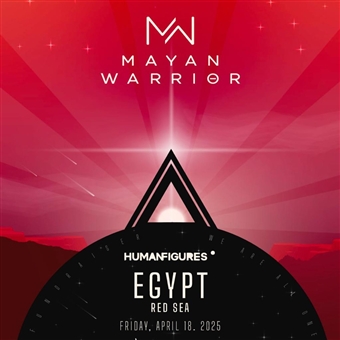The Babadook: Things That Go Bump in the Cinema
One of the most powerful horror films to come out in a long time, international film critic Wael Khairy remains blown away by The Babadook long after he left the cinema...

After watching Lars von Trier’s Dancer in the Dark, Jennifer Kent wrote the director an email expressing her willingness to learn from him. At one point, she explains that she would rather stick pins into her eyeballs than go to film school. She must’ve said something right, because he replied with an invitation to his Dogville set. The idea was to let her watch and learn, and let me assure you, watch and learn she did.
The young Australian’s feature film debut, The Babadook, is the horror film of the year and probably the best horror film to come out since Let the Right One In. Now, that may not be saying much since the horror genre hasn’t been all that impressive lately, but it really is a rather brilliant film. Here’s a horror film that strays away from cheap thrills, and taps into something real; true human fear, grief, anxiety, and depression.
If you watch the trailers, you will most probably write it off as just another run-of-the-mill Boogeyman film. At least, this is how I felt when I first encountered the trailers, but then all the five-star reviews started rolling in and I had to give the film a shot. I remember walking out of the cinema with mixed feelings. However, the more I thought of The Babadook, the deeper it sank into my psyche. The Babadook is knitted from the same cloth as the greatest horror films of all time, from Rosemary’s Baby to The Shining. It scares you long after you’ve walked out of the theatre; it lingers in your thoughts and crawls under your skin. You won’t be able to shake off the unnerving feeling this film gives you for days after the initial viewing. That said, it does require thought and analysis, and it is only after you attempt to understand what it all means that’ll start haunting you.

Essie Davis delivers one of the strongest lead performances of the year as a widow haunted by the memory of her husband, who died in an accident on their way to the hospital to deliver their baby. The story begins years later. Amelia is constantly stressed out and exhausted. Most of her time is spent looking after a kid “with significant behavioural problems.” The troubled boy is also relentless in his fantasy; a monster he believes will eat his mother from the inside out.
Amelia skims through clips of silent George Melies shorts late at night on her living room TV. Melies is a filmmaker who believed filmmakers are like magicians performing a grand illusion to audiences using cinematic tools. Magic is a big theme in The Babadook, and the whole film feels like it’s one huge magic trick. At first, Kent tricks us into thinking we’re about to watch a film about a problematic disturbed child who has access to another demonic dimension, but as soon as the Babadook creeps into their home, we begin to suspect that the problem isn’t with the child, but rather the mum. The final reveal will have many scratching their heads wondering what they’ve just seen and more importantly what it all means.
The deeply disturbing demonic figure known as the Babadook erupts into their lives around the anniversary of her husband’s death, which coincides with her son’s birthday. The reading of an old children’s pop-up book titled Mister Babadook is what essentially unleashes hell upon them. The book is brilliantly designed with disturbing illustrations clearly influenced by German Expressionism. In fact, the creature resembles a character you’d see in Nosfertu or The Cabinet of Dr. Caligari. Kent is well-versed in the roots of the horror genre; she knows her films proudly with her references up her sleeves. It kind of gives her film historic weight.

The aspiring filmmaker pitched her idea through Kickstarter and raised $30,071. Most of her budget was used to cultivate the art direction of the film. With a budget so small, Kent managed to create a horror film that very much looks and feels more authentic and spooky than any horror film to come out this decade. I will now proceed and reveal what I think the Babadook stands for. If you don’t want the ending spoiled, I strongly suggest you stop reading and I hope you return to this review after witnessing one of the most talked about endings in a long time.
The malevolent Babadook is basically a physicalised form of the mother’s trauma. What it stands for is up for debate. I believe the Babadook embodies the destructive power of grief. Throughout the film, we see the mother insist nobody bring up her husband’s name. She basically lives in denial. Amelia has repressed grief for years, refusing to surrender to it. Here lies the mastery of Kent’s film; it is frightfully clever because not only is it based on something very real, it is feels unusually beautiful and even therapeutic.
“If it’s in a word or in a look, you can’t get rid of the Babadook
I’ll wager with you, I’ll make you a bet
The more you deny, the stronger I get,
The Babadook is growing right under your skin.”
Throughout the film, Amelia tries to hide the book and even burn it at one point, only to have it, and the monster latched on to it, reappear. Denying a traumatic memory and pretending it never happened to avoid dealing with grief only works for so long before it eats you from the inside out, and you release it all in the form of a mental breakdown.
Amelia avoids pictures of her husband and flips out when someone utters his name; the actions of a woman in complete denial. You can’t get rid of your past, but you can learn to live with it, and that’s exactly what our main character does by the end of the film.
We see her feed the Babadook in the basement. The basement is where her husband’s stuff is locked away. By feeding the Babadook, she metaphorically feeds her grief. Rather than completely shutting it off and locking it away, she keeps it at bay. She controls and manages the monster the second she acknowledges that you can’t escape your past; you can only learn to live with it.
- Previous Article Music Above All
- Next Article Mahmoud Refaat: Bringing Noise
Trending This Week
-
Apr 03, 2025




























